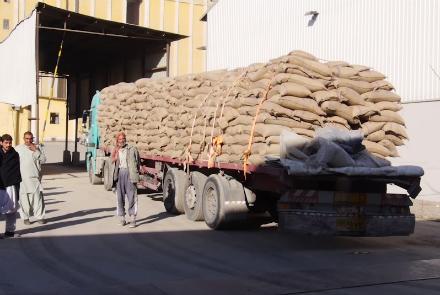The Afghan Ministry of Agriculture, Irrigation and Livestock (MAIL) on Thursday said it plans to build at least five new wheat storage facilities, in five provinces, which will increase the total storage capacity by over 150,000 metric tons.
$35 million USD will be spent on the project, said MAIL spokesman Akbar Rustami.
According to officials, the new wheat storage facilities will help control wheat prices and will enable the ministry to ensure there is wheat in store in the event of emergencies.
A number of economic analysts said government should make sure that these facilities are built in line with global standards in order to ensure the wheat is preserved correctly.
“If there are strategic facilities available for us I think this would be a positive move if we also establish new strategic reserves,” said economic analyst Sayed Massoud.
“The overall capacity of these five facilities will be about 195,000 metric tons of wheat,” said MAIL spokesman Akbar Rustami
Based on statistics, Afghanistan currently has nine storage facilities in nine provinces.
Afghanistan needs six million tons of wheat annually and of this, 4.5 million tons comes from domestic sources and another 1.5 million from abroad.
According to MAIL, Afghanistan’s current storage capacity for cereal is estimated to be 270,000 tons. However, MAIL officials have said government would like the private sector to invest in the establishment of such facilities – especially for wheat.

